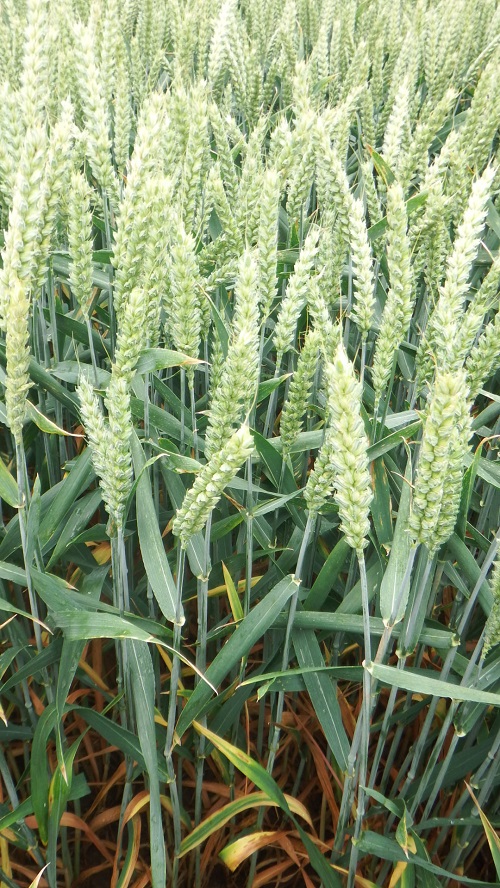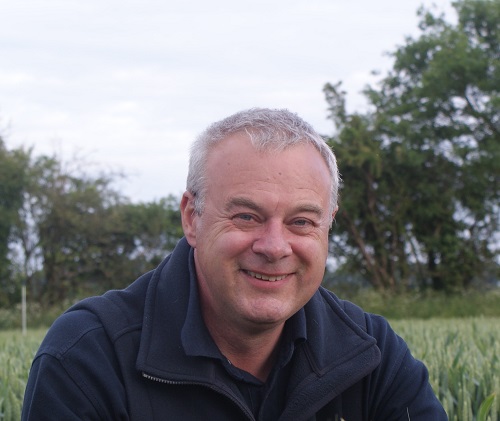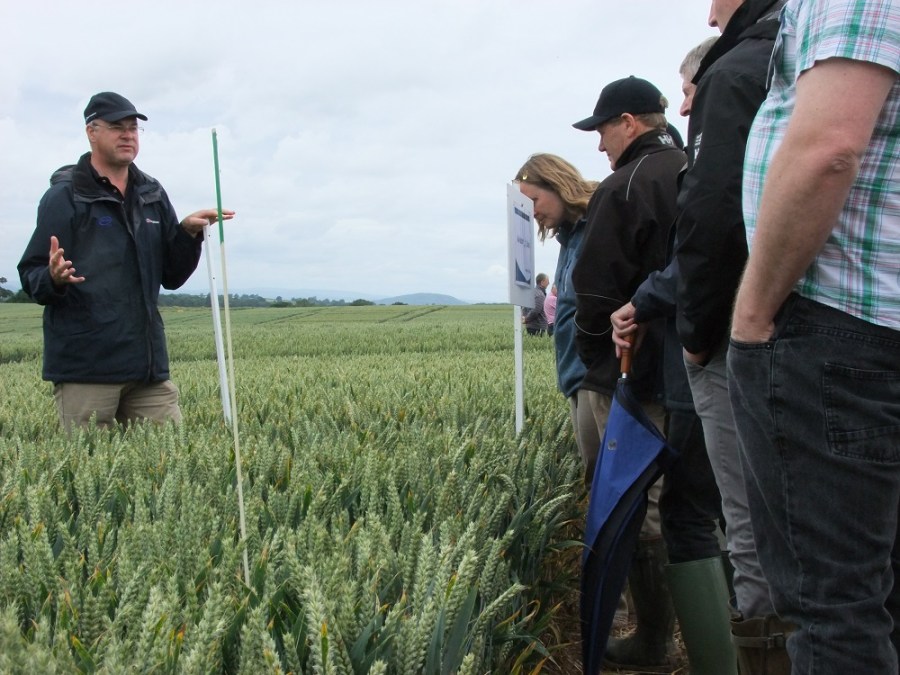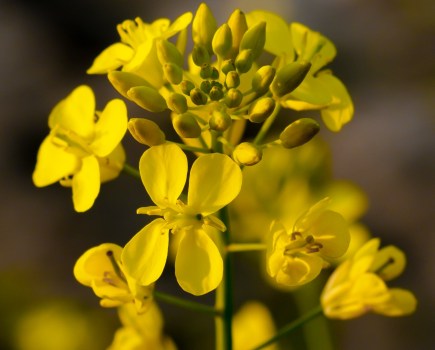The difficulty with septoria has always been its latent phase but new technology is being trialled that may take the guesswork out of fungicide programmes. CPM reports.
By Lucy de la Pasture
Most growers have had the experience of looking at clean crops of winter wheat, only to find leaves riddled with septoria a few weeks later. But that could be a thing of the past with new DNA measurement technology being trialled in a partnership of Bayer and Fera.
The practical application of this innovation was demonstrated at a recent Bayer Field Day at Callow in Herefords. Currently the technology looks promising, but the equipment is a bit cumbersome. But the aim is to shrink down what’s currently laboratory apparatus to a more convenient, smart-phone sized piece of kit, making it much more suitable for widespread commercial uptake.
The aim of the research is to enable growers and agronomists to take visually ‘healthy’ green leaves, and measure the hidden (latent) septoria levels within them using DNA analysis, explains Bayer’s Jonathan Helliwell.
Calculated guess
“Currently in-field latent septoria predictions are no more than a calculated guess. Disease expectations are calculated using factors such as variety, drilling date, current weather and the carry-over of inoculum from the previous season.
“We’ve all heard growers express surprise at how quickly septoria can take hold. The big challenge is that green leaves don’t give any indication of the potential disease housed inside,” he says.
The project is in its first year, but has already shown worthwhile results at T2 this season, helping refine disease tactics.

Plots treated with a T1 of Aviator plus CTL, delayed by 12 days, shows increased infection on leaf 1 and 2, revealing the importance of latent infection and fungicide timing.
“One of the problems growers face is knowing what the actual septoria status is at GS39 in wheat crops. Are they still in a largely protectant scenario or is some kick-back needed, and if so how much? This DNA measuring technology could give a clear guide on product choice, the rate of azole plus SDHI required, and whether there’s a need for any supplementary chemistry.
“When in a protectant state, adding CTL to an azole-plus-SDHI mix at T2 may enhance septoria protection. But if curative activity is needed, CTL inclusion could antagonise the SDHI so it might be best to omit it. This technology eliminates the guesswork – you can tailor T2 sprays precisely to the disease present, and its severity,” he says.
Latent DNA measuring has also revealed the value of varietal tolerance. In the study, leaf 2 was taken from 54 plots just ahead of GS39 – an equal split of treated and untreated samples – and tested for septoria DNA.
Variety tolerance
The analyses revealed huge variation in accumulations of septoria DNA across varieties with a range of septoria tolerances. “Every leaf sample from the untreated Santiago plots had high levels of latent infection. Yet for Evolution and particularly Siskin, it was typically lower,” says Jonathan Helliwell.
“Septoria symptoms express on the leaf surface approximately 220 day-degrees from infection in a susceptible variety, and in ideal conditions this can be as short as 12 days. What this data highlights, is the less susceptible varieties buy flexibility in spray timing, with more susceptible varieties being first in the spray queue,” he notes.
Build in robust T0 and T1 strategies and latent septoria levels fall even further, explains Jonathan Helliwell.
“Where we applied tebuconazole plus CTL at T0, followed by Aviator (prothioconazole+ bixafen) at T1, only two out of the nine Santiago samples had latent infection, and the degree of disease was very low.
Buying flexibility
“As with variety ratings, effective T0 and T1 applications buy some additional flexibility at T2. Just as importantly, it reduces the pressure on SDHI chemistry by making that application less curative.
“The aim is to reach the T2 timing in a more protective situation – even where the more curative products such as Ascra (prothioconazole+ bixafen+ fluopyram) are chosen. By reducing pressure on T2 chemistry and coupling the program with a robust variety, we’re building better resistance management strategies.”

Tim Nicholson points out differences between well-timed and poorly-timed T1 sprays this season.
Making fungicide applications at the right timings was highlighted by Bayer’s Tim Nicholson, who took visitors around a Bayer timing trial. Several plots had had their T1 applications delayed by 12 days after leaf three was fully emerged, to simulate a delayed T1.
The results were revealing – despite spring 2017 not being particularly high in terms of disease pressure, septoria was noticeably more visible in the delayed plots than where applications were correctly timed.
“The damage from septoria established in the base and moving up to leaves one or two is evident in these plots. In correctly timed plots, the disease has been confined to the lower leaves,” he observes.
Varying performance
As expected, the plots where a SDHI was applied at T1 had fared better, but differences were visible between SDHI-based treatments. Tim Nicholson believes this isn’t just down to varying performance in SDHIs but in azoles too.
“There’s evidence of the same hierarchy with SDHIs as we see in azoles, but not to the same degree. We can see this in plots treated with 1.0 l/ha of Adexar (epoxiconazole+ fluxapyroxad). Fluxapyroxad offers curative properties akin to bixafen, yet these plots are carrying more disease. This is down to reduced support from its azole partner,” he suggests.
With correctly timed plots pretty much disease-free, Tim Nicholson fielded questions about using just azole plus CTL at T1. Acknowledging that plots with robust doses of prothioconazole and CTL had performed well, his view is an Aviator (prothioconazole+ bixafen) plus CTL mix is the better option in most cases, both in terms of protectant and curative activity.
“The reason why a product like Aviator is such a good protectant is the active ingredients, prothioconazole and bixafen, move together in the leaf and the surface properties of CTL add further protection. Bearing in mind that in some seasons you only get a handful of ideal spray days, the extra curative activity bixafen offers provides more assurance should things not go as planned,” he concludes.




